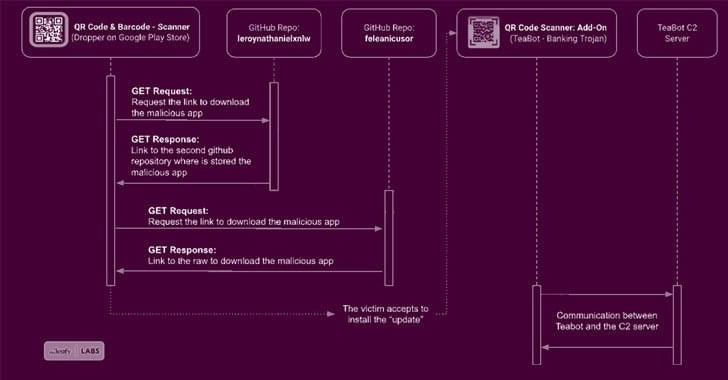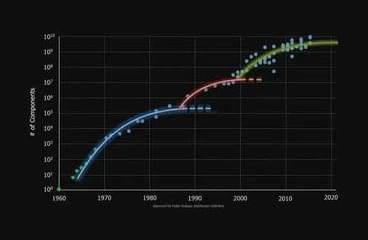Finance and investment companies as well as customers looking for more environmentally responsible portfolios have all caught the ESG bug.






The hackers claimed that the attack was to “slow down the transfer” of troops moving from Belarus to northern Ukraine, saying that they had put the trains in “manual control” mode which would “significantly slow down the movement of trains, but will not create emergency situations.”
An ideological aversion to high-stakes situations has been expressed by other hacking groups. Anonymous, which has claimed a number of attacks on Russia’s banks and services, the websites of the President of the Russian Federation and Russia’s Ministry of Defence, has said that critical infrastructure is a “no-go” due to the risk of exacerbating the already tumultuous situation in eastern Europe.
Sergei Voitehowich, a former employee of Belarus’s state-owned Belarus Railway company, said that the Cyber Partisans had damaged the train traffic control system and that while it has been restored, other systems were experiencing issues and making it “impossible to buy tickets”, according to Bloomberg.

The invasion was met with sharp rebuke from the United States, the European Union and NATO allies, with broad, unprecedented financial and diplomatic sanctions promised against Russia, sanctions that are likely to affect business, trade and finance across the region.
The impacts of the invasion are also, undoubtedly, being felt across Ukraine’s wider tech ecosystem, which includes not only hundreds of startups and larger tech firms, but also research and development offices for some of the world’s biggest technology brands.
As the situation on the ground changes rapidly over the next few hours and days, TechCrunch will continue to bring news and analysis on how the conflict unfolds across the tech and startup community.

There’s another thing that’s attracting talent at Big Tech companies to Web3: money.
According to data from Blind, a social network for tech professionals, bitcoin exchange Coinbase offers as much as $900,000 a year for software engineers.
Investment into crypto companies has surged, meaning they’ve got much more cash to spare on lucrative compensation packages for big hires. Blockchain start-ups raised a record $25 billion in venture capital last year, according to CB Insight figures.

Some say that Moore’s Regulation, which tracks the exponential progress electronics during the last six a long time has stalled, and technological stagnation threatens. Mark Rosker, director of DARPA’s Microsystems Know-how Workplace (MTO), sees issues very in another way. In a new interview with Samuele Lilliu, he explains how the expansion described by Moore’s Regulation has been sustained by waves of innovation from DARPA and the way the following stage, what he calls the Fourth Wave, might be carried ahead by applied sciences his workplace is now creating.
The best model of Moore’s Regulation says that the variety of transistors on a silicon chip roughly doubles each two years. This was an commentary made by Gordon Moore – who later co-founded Intel – in 1965, and it proved to be remarkably correct. Yearly since then, an increasing number of highly effective computer systems and, later, laptops and smartphones have appeared in the marketplace. Low-cost chips have now grow to be important for vehicles, televisions, cameras and different units, which beforehand functioned with out electronics. They’re important throughout the financial system.
Describing the progress as a “Regulation” could also be deceptive. Moore’s Regulation is an outline of the development in semiconductor manufacturing, pushed by advances in science and know-how which requires fixed innovation to maintain going, not a pure course of.

In addition to securities fraud and obstruction of justice, James Velissaris has been charged with wire fraud and lying to auditors.
The founder and manager of a $1.7 billion mutual fund that collapsed last year has been charged by federal prosecutors with securities fraud and obstruction of justice for allegedly inflating fund asset values to keep investor money flowing, then falsifying records to conceal the improprieties.
The Infinity Q Diversified Alpha Fund halted investor redemptions in February 2021, roughly seven years after it was co-founded by James Velissaris, 37, its chief investment officer. A government inquiry began, Velissaris stepped down and the mutual fund and a parallel hedge fund he oversaw began liquidating.
It was a rare example of a big mutual fund failure amid a roaring bull market. And the collapse ensnared billionaire investor David Bonderman, co-founder of TPG, a huge private-equity firm that went public this year. The Bonderman Family was a major investor in Infinity Q Capital Management, the investment company overseen by Velissaris, regulatory documents show. Velissaris had worked for the Bonderman family before he co-founded Infinity Q Capital Management.
The Future Of Space Tech & Innovation — Dr. Joel Mozer Ph.D., Director of Science, Technology & Research, United States Space Force.
Dr. Joel Mozer is the Director of Science, Technology, and Research, United States Space Force (https://www.spaceforce.mil/).
With a PhD in Physics, and MS in Atmospheric Science, from University of Arizona, Dr. Mozer serves as the principal scientific advisor to the Commander and is the senior authority for all science and technology matters for an organization of approximately 11,000 space professionals worldwide, and manages a global network of satellite command and control, communications, missile warning and launch facilities. In this role, he interacts with other principals, operational commanders, combatant commands, acquisition, and international communities to address cross-organizational science and technical issues and solutions.
Dr. Mozer represents USSF science and technology on decisions, high-level planning, and policy, building coalitions and alliances throughout the U.S. government, industry, academia, the international community, and other scientific and technology organizations.
Dr. Mozer entered government service in 1992 with the U.S. Air Force. Prior to his current assignment, he was Chief Space Experimentalist of the Air Force Research Laboratory Space Vehicle Directorate. In that role, he was responsible for managing AFRL’s $40 million-per-year investment in research and development related to the development of experimental satellites and payloads and conducted a team of 100 engineers and scientists at Kirtland and Holloman Air Force Bases, New Mexico — all working to develop cost-effective ways to assemble, integrate, test and fly novel spacecraft and systems and demonstrating new concepts for Department of Defense systems and missions. His area of specialization relates to space control and remote sensing — understanding the natural and man-made space environment and developing forecast tools for warfighters, theater battle commanders and other decision-makers to mitigate risks.